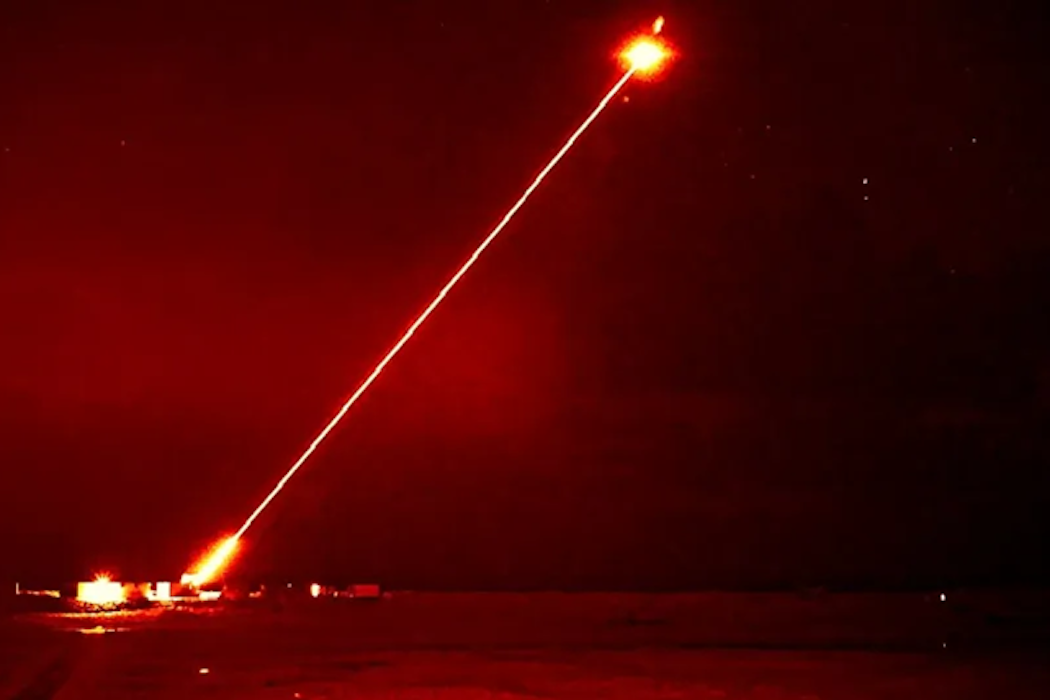- Home
Edition
Africa Australia Brasil Canada Canada (français) España Europe France Global Indonesia New Zealand United Kingdom United States Edition:
Global
Edition:
Global
- Africa
- Australia
- Brasil
- Canada
- Canada (français)
- España
- Europe
- France
- Indonesia
- New Zealand
- United Kingdom
- United States
 Academic rigour, journalistic flair
Drones have changed warfare. Two new weapons might be about alter its course again
Published: November 27, 2025 5.19pm GMT
Matthew Powell, University of Portsmouth
Academic rigour, journalistic flair
Drones have changed warfare. Two new weapons might be about alter its course again
Published: November 27, 2025 5.19pm GMT
Matthew Powell, University of Portsmouth
Author
-
 Matthew Powell
Matthew Powell
Teaching Fellow in Strategic and Air Power Studies, University of Portsmouth
Disclosure statement
Matthew Powell does not work for, consult, own shares in or receive funding from any company or organisation that would benefit from this article, and has disclosed no relevant affiliations beyond their academic appointment.
Partners
University of Portsmouth provides funding as a member of The Conversation UK.
View all partners
DOI
https://doi.org/10.64628/AB.jd3ydagp6
 DragonFire is being developed by the Royal Navy and is expected to be deployed as early as 2027.
Ministry of Defence
https://theconversation.com/drones-have-changed-warfare-two-new-weapons-might-be-about-alter-its-course-again-267895
https://theconversation.com/drones-have-changed-warfare-two-new-weapons-might-be-about-alter-its-course-again-267895
Link copied
Share article
DragonFire is being developed by the Royal Navy and is expected to be deployed as early as 2027.
Ministry of Defence
https://theconversation.com/drones-have-changed-warfare-two-new-weapons-might-be-about-alter-its-course-again-267895
https://theconversation.com/drones-have-changed-warfare-two-new-weapons-might-be-about-alter-its-course-again-267895
Link copied
Share article
Share article
Copy link Email Bluesky Facebook WhatsApp Messenger LinkedIn X (Twitter)Print article
Like so many conflicts before it, the Russo-Ukraine war has forced both sides to innovate. Since they have been able to gain control of opposition air space, neither side has made wide use of traditional air assets such as fast fighter jets. which take much time and money to manufacture and so can’t be risked in active operations.
Instead, drones are now dominating the war. According to figures emerging from Ukraine, drones are causing an overwhelming percentage of all the casualties the country is suffering, amounting to between 60% to 70%.
However, history shows that this kind of technological advance in warfare is often followed by the development of counter measures. And we’re now seeing the emergence of anti-drone weapons that could reduce the importance of unmanned aerial vehicles in the Ukraine conflict and beyond.
The use of drones has changed the character of warfare with the zone in which ground forces are vulnerable to lethal attack extending to between six and nine miles behind the front lines. This has made trenches, fortified positions and armoured vehicles much more vulnerable than they would have been previously.
It is not just in the attack role that drones have proved their value, although their use in the intelligence, surveillance and reconnaissance role is remarkably similar to that performed by aircraft and balloons in the first world war. Drones have been used to provide real-time intelligence and situational awareness of the battlefield to aid planning and mid-level command, control and communication on the battlefield.
The ability for drones to loiter for prolonged periods of time, combined with the difficulty in successfully targeting these assets, has also seen their use in artillery spotting.
Drones are being used on the battlefield, but also against civilian populations in Ukraine and Russia.It has been argued that drones – and uncrewed aerial vehicles more generally – represent a radical change in the way moderns wars are fought and that these assets will shape the future of aerial warfare for a significant period. But what this argument fails to take into account is that when new technologies are deployed in warfare, counter measures and innovations can often quickly emerge that reduce their effectiveness.
The first use of tanks on the western front was during the five-month Battle of the Somme in 1916. Despite the radical boost the first tanks gave the allied forces, the Germans had soon negated this effect through the use of anti-tank guns by early 1917.
Countering drones
Similar developments are being seen in Ukraine where simple countermeasures such as netting are being used to reduce drones effectiveness. While this is providing a limited degree of protection, more technologically sophisticated countermeasures are being developed elsewhere.
The UK’s navy has recently announced it will deploy a direct-energy weapon that has been named DragonFire. DragonFire is a laser-based defensive capability that has the capability to target and destroy small offensive weapons such as drones.
While there are limitations to Dragonfire, such as the requirement to be able to see the target in order to engage it, it demonstrates the continual tit-for-tat developments that widely encompass warfare.
The cost per shot of Dragonfire is as low as £10 and it can engage a target the size of a one-pound coin from a distance of one kilometre. This will mean that assets such as drones more vulnerable to defensive capabilities and calls into question the claim that drones are the future of aerial warfare. The Royal Navy plans to begin deploying DragonFire from 2027.
The UK is also experimenting with another form of direct-energy weapon that relies on radio-frequency systems. This new defensive weapon, which is currently undergoing trials, would use a pulse of directed radio waves in order to disable the internal electronics of assets such as drones.
The UK is trialling a radio frequency directed energy weapon which would take out enemy drones with a radio wave.This system has advantages over Dragonfire. The first is that it is not a line-of-sight weapon, so it can be deployed in bad weather and in low cloud cover. DragonFire has to be able to see its target in order to be able to engage it effectively.
The second is that a radio pulse weapon can engage several targets in a specified area, whereas Dragonfire is only able to engage one target at a time.
But the major disadvantage to a radio pulse weapon is that it cannot discriminate between the targets which it engages. This means that friendly aircraft cannot fly when this target is being utilised.
The traditional tempo of technological developments and countermeasures that is a major character in warfare shows no sign of abating in 21st-century conflicts. So while drones are likely to remain important weapons, the idea that they will revolutionise warfare and make crewed warplanes obsolete is still to be seen.
- Lasers
- Drones
- History of war
- drone warfare
- Ukraine invasion 2022
- Educate me
Events
Jobs
-
 Senior Lecturer, Human Computer Interaction
Senior Lecturer, Human Computer Interaction
-
University Lecturer in Early Childhood Education
-
 Case Specialist, Student Information and Regulatory Reporting
Case Specialist, Student Information and Regulatory Reporting
-
 Lecturer in Paramedicine
Lecturer in Paramedicine
-
 Associate Lecturer, Social Work
Associate Lecturer, Social Work
- Editorial Policies
- Community standards
- Republishing guidelines
- Analytics
- Our feeds
- Get newsletter
- Who we are
- Our charter
- Our team
- Partners and funders
- Resource for media
- Contact us
-
-
-
-
Copyright © 2010–2025, The Conversation

 Senior Lecturer, Human Computer Interaction
Senior Lecturer, Human Computer Interaction
 Case Specialist, Student Information and Regulatory Reporting
Case Specialist, Student Information and Regulatory Reporting
 Lecturer in Paramedicine
Lecturer in Paramedicine
 Associate Lecturer, Social Work
Associate Lecturer, Social Work